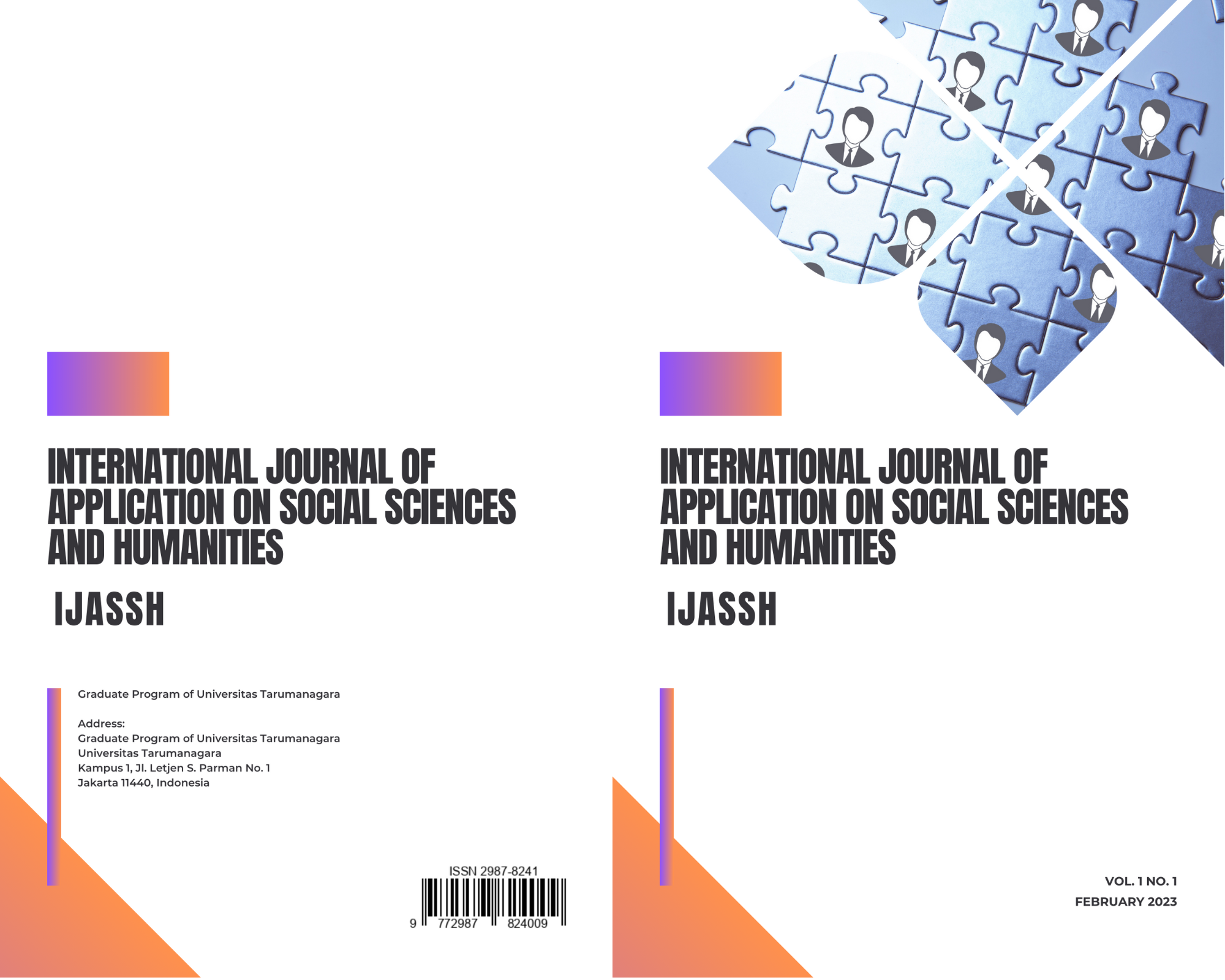OVERVIEW OF DEPRESSION SYMPTOMS IN ADOLESCENTS (DRAWING ANALYSIS BASED ON WADESON’S ART THERAPY STUDIES)
Main Article Content
Abstract
Adolescence is a crucial period for the physical and psychological development of an individual. Sometimes depressed adolescents may have difficulty expressing their emotions and feeling in words or verbally. Depressed adolescents also need to release painful emotions for themselves in order to feel relief or freedom. One of the media for depressed adolescents to express their emotions is through painting or drawing. The purpose of this study was to see how is the overview of adolescents’ depressive symptoms based on drawing analysis. Wadeson’s art therapy studies were used as the guidelines to analyzed the drawings with formal and content analysis technique. This study used a qualitative approach with a total of 11 participants who attended drawing sessions that were held at Universitas Tarumanagara. Beck Depression Inventory II was used to select participants with moderate and severe depression. The results of the study showed that depressive symptoms in adolescents’ drawings were seen using strong pressure, disorganized, organic shapes and human figure, dominated with blue and green color also neutral colors, repetitive and thick lines, focal point on the objects, less detail, emptiness and sadness contents, negative affect, and good effort on drawing.
Article Details

This work is licensed under a Creative Commons Attribution-NonCommercial-ShareAlike 4.0 International License.
References
A. A. Rachmawati, Darurat Kesehatan Mental bagi Remaja, UGM, 2020.
A. Hurst, Movement – A Principle of Art, The Virtual Instructor, 2018. https://thevirtualinstructor.com/blog/movement-a-principle-of-art
A. M. Firmansyah, Teori Menggambar, UNISA, 2021.
A. R. Wilkinson, G. Chilton, Positive Art Therapy Theory and Practice: Integratiing Positive Psychology with Art Therapy (Eds.), Routledge, 2021.
A. T. Beck, J. E. Young, Depression, Clinical Handbook of Psychological Disorders: A step-by-step treatment manual, 1985, pp. 206-244.
Art in Context, Movement in Art – Exploring the Use of Visual Movement in Art, 2022. https://artincontext.org/movement-in-art/
C. Richardson, Expressive Arts Therapy for Traumatized Children and Adolescens: A Four-Phase Model (Eds.), Routledge, 2015.
C. V. Eenoo, Empty space and silence, Arts and Design Studies, vol. 15, 2013, pp. 1-5. ISSN 2224-6061 (Paper) ISSN 2225-059X (Online)
D. E. Gussak, M. L. Rosal, The Wiley Handbook of Art Therapy, John Wiley & Sons Inc., 2016.
D. E. Papalia, S. W. Old, R. D. Feldman, Human Development Perkembangan Manusia, Salemba Humanika, 2009
E. B. Hurlock, Psikologi Perkembangan Suatu Pendekatan Sepanjang Rentang Kehidupan, Erlangga, 2010.
F. Banishoeib, Messy Art, MAHB Standford, 2021. https://mahb.stanford.edu/blog/messy-art/
F. J. Monks, S. R. Haditono, A. M. P. Knoers, Psikologi Perkembangan: Pengantar dalam Berbagai Bagiannya (Eds.), Gadjah Mada University Press, 2002.
G. Groth-Marnat, Handbook of Psychological Assessment (Eds.), John Wiley & Sons Inc., 2003.
H. Wadeson, Art Psychotherapy (Eds.), John Wiley & Sons Inc, 2010.
I. Hadi, Gangguan Depresi Mayor (Mayor Depressive Disorder) Mini Review, Health Information, 9(1) (2017) 25-40. DOI: doi:10.36990/hijp.v9i1.102
I. Penzes, S. A. H. V. Hooren, D. Dokter, G. Hutschemaekers, How art therapists observe mental health using formal elements in art products: structure and variation as indicators for balance and adaptability, Front. Psychol. Clin. Health. Psyhcol. DOI: 10.3389/fpsyg.2018.01611
J. E. Drake, K. Coleman, E. Winner, Short-term mood repair through art: Efects of medium and strategy, Art Therapy, 28(1) (2011) 26-30.
J. Guttmann, D. Regev, The phenomenological approach to art therapy, Journal of Contemporary Psychotherapy: On the Cutting Edge of Modern Developments in Psychotherapy, 34(2) (2004) 153–162. DOI: https://doi.org/10.1023/B:JOCP.0000022314.69354.41
J. L. Horowitz, J. Garber, The prevention of depressive symptoms in children and adolescents: A meta-analytic review, Journal of Counslting and Clinical Psychology, 74(3) (2006) 401-415. DOI: https://doi.org/10.1037/0022-006X.74.3.401
J. W. Santrock, Perkembangan Anak, Erlangga, 2011.
M. Catherine, Messy Art That Inspires Creativity, Fun A Day, 2022. https://fun-a-day.com/messy-art/
M. Fussell, The Elements of Art, The Virtual Instructor, 2014. https://thevirtualinstructor.com/artfundamentals.html
M. Jovic. Minimalist Art: When Less is More, Artacia, 2020. https://www.artacacia.com/blogs/posts/minimalist-art-when-less-is-more
M. Mitchell, Eloquent Absence: The Use of Emptiness in Art, Mark Mitchell Paintings, 2015. https://www.markmitchellpaintings.com/blog/eloquent-absence-the-use-of-emptiness-in-art/
M. Ombajin, Organization in The Visual Arts and Principles of Design, Presentation, Mindanao State University, 2014.
N. Hass-Cohen, R. Carr, Art Therapy and Clinical Neuroscience, British Library, 2008.
N. L. Lubisa, Depresi dan Tinjauan Psikologis, Penada Media Group, 2016.
O. Hamalik, Kurikulum dan Pembelajaran, Bumi Aksara, 2017.
Pusat Data dan Informasi Kementrian Kesehatan RI, Situasi Kesehatan Jiwa Indonesia, Pusdatin, 2018. https://pusdatin.kemkes.go.id/resources/download/pusdatin/infodatin/InfoDatin-Kesehatan-Jiwa.pdf
R. Witherspoon, Art Trends: Abstracting the Human Form, 2021.
S. Haq, Jurus-jurus Menggambar dan Mewarnai dari Nol, Mitra Barokah Abadi Press, 2008.
S. Maemunah, Gejala depresi tokoh utama dalam novel represi karya Fakhrisna Amalia, GERAM (Gerakan Aktif Menulis), 9(2) (2021) 153-162.
S. Riley, Art therapy with adolescents, The Western Journal of Medicine, 2001, pp. 54-57. DOI: https://doi.org/10.1136/ewjm.175.1.54
Sarwono, Psikologi Remaja, Rajawali Pers, 2011.
World Health Organization, Depression, WHO, 2020. https://www.who.int/news-room/fact-sheets/detail/depression



